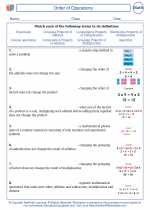Algebra Study Guide
Algebra is a branch of mathematics that uses letters and symbols to represent numbers and quantities in equations and formulas. It involves solving for unknown variables and studying the rules and operations of these mathematical expressions. Here's a study guide to help you understand and master the basics of algebra.
Understanding Variables and Constants
In algebra, variables are represented by letters such as x, y, or z, and they represent unknown values. On the other hand, constants are fixed values that do not change, such as numbers like 3, 5, or -2.
Basic Operations
Algebra involves basic operations such as addition, subtraction, multiplication, and division, which are performed on variables and constants to solve equations and simplify expressions.
Addition and Subtraction
To add or subtract algebraic expressions, combine like terms by adding or subtracting the coefficients of the same variables.
Multiplication and Division
When multiplying or dividing algebraic expressions, use the distributive property to expand and simplify the expressions.
Equations and Inequalities
Equations are mathematical statements that show the equality of two expressions, while inequalities compare two expressions using symbols like < (less than), > (greater than), ≤ (less than or equal to), or ≥ (greater than or equal to).
Solving Equations
To solve equations, isolate the variable by performing inverse operations, and use properties of equality to maintain the balance of the equation.
Solving Inequalities
When solving inequalities, be mindful of the direction of the inequality sign and apply the same operations to both sides of the inequality to maintain its validity.
Graphing and Coordinate Plane
Algebra utilizes the coordinate plane to graph equations and represent relationships between variables. The x-axis represents the horizontal values, while the y-axis represents the vertical values.
Plotting Points
To plot points on the coordinate plane, use the ordered pair (x, y) where x represents the horizontal value and y represents the vertical value.
Graphing Linear Equations
Linear equations can be graphed by identifying the slope and y-intercept, and then plotting the corresponding points to draw the line.
Exponents and Polynomials
Exponents represent repeated multiplication, while polynomials are algebraic expressions that consist of variables and coefficients, combined using addition, subtraction, and multiplication.
Exponential Notation
Exponential notation is used to represent repeated multiplication, where the base number is raised to a certain power.
Adding and Subtracting Polynomials
To add or subtract polynomials, combine like terms by adding or subtracting the coefficients of the same variables.
Multiplying Polynomials
Multiplying polynomials involves distributing each term of one polynomial to every term of the other polynomial, and then combining like terms.
By mastering these fundamental concepts and operations in algebra, you'll be well-equipped to tackle more complex algebraic problems and equations in the future.
[Algebra] Related Worksheets and Study Guides:
.◂Math Worksheets and Study Guides Fifth Grade. Algebra
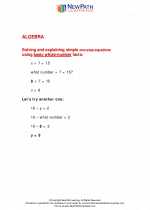
 Activity Lesson
Activity Lesson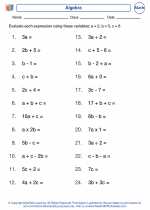
 Activity Lesson
Activity Lesson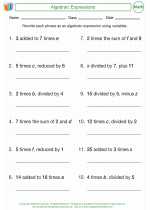
 Activity Lesson
Activity Lesson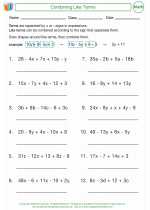
 Activity Lesson
Activity Lesson
 Worksheet/Answer key
Worksheet/Answer key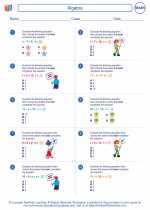
 Worksheet/Answer key
Worksheet/Answer key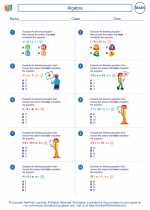
 Worksheet/Answer key
Worksheet/Answer key
 Worksheet/Answer key
Worksheet/Answer key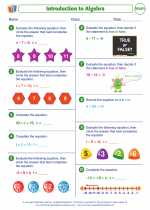
 Worksheet/Answer key
Worksheet/Answer key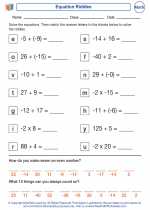
 Worksheet/Answer key
Worksheet/Answer key
 Worksheet/Answer key
Worksheet/Answer key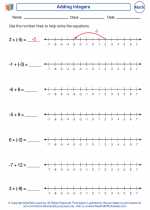
 Vocabulary/Answer key
Vocabulary/Answer key